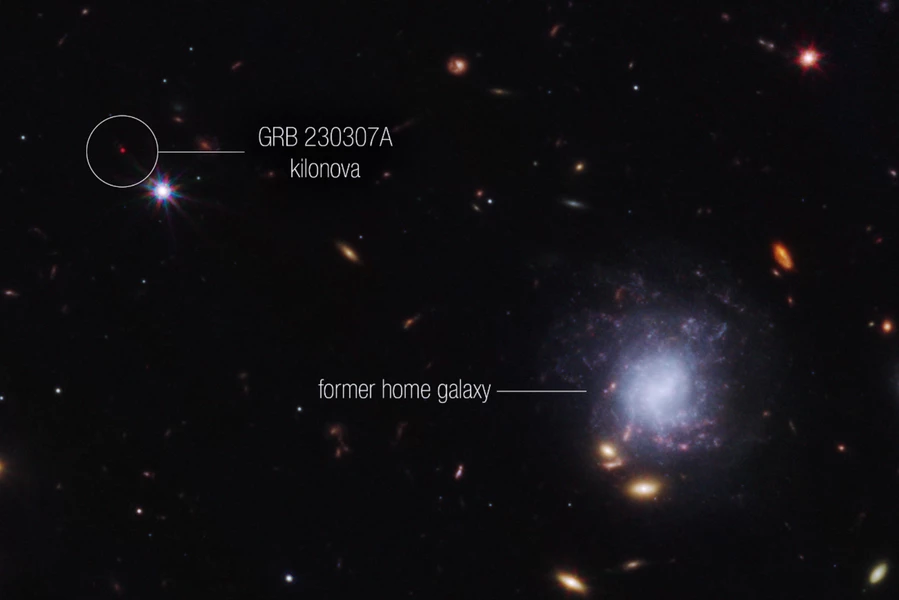Astronomers have detected one of the most energetic explosions in the history of the universe – a gamma ray burst thrown off by two neutron stars colliding. And for the first time ever, heavy metals were detected being produced in the explosion, totaling hundreds of Earths in mass.
Gamma ray bursts (GRBs) are the most energetic events known to occur since the Big Bang itself, releasing as much energy in a few seconds as the Sun will over its entire 10-billion-year lifetime. They’re thought to be part of the signal salad released during some supernovae, or when pairs of neutron stars crash into each other.
The newly described event, designated GRB 230307A, falls into the latter category. It was first detected by NASA’s Fermi Gamma-Ray Space Telescope on March 7 this year, and was the second most powerful GRB ever detected, beaten only by the “1 in 10,000-year” burst that swept over Earth in October 2022. The flash was not only extremely bright but lasted 200 seconds – 100 times longer than most GRBs produced by neutron star mergers.
“It might be difficult to overstate how bright it was,” said Michael Fausnaugh, co-author of the study. “In gamma-ray astronomy, you’re usually counting individual photons. But so many photons came in that the detector couldn’t distinguish individual ones. It was kind of like the dial hit the max.”
The brightness and length of this light show meant it was spotted by a range of observatories around the world, allowing astronomers to triangulate its location – the Mensa constellation, near the south celestial pole. It came from a distance of about 900 million light-years, and the Very Large Telescope revealed that the emissions from the event quickly switched from blue to red wavelengths, in a pattern common to neutron star collisions.
Finally, the James Webb Space Telescope was pointed at the location to investigate in more detail. Strangely enough, the GRB was traced to intergalactic space, 120,000 light-years away from the nearest galaxy.

But most importantly, the telescope was able to pick up the spectral fingerprint of tellurium for the first time. This heavy metal is rarer than platinum here on Earth, but is thought to be fairly common throughout the universe. It’s long been suspected that tellurium would be produced in neutron star collisions, but this marks the first confirmation. The team estimates that the explosion produced tellurium totaling about 300 times the mass of Earth, as well as related elements like iodine.
“This discovery is a major step forward in our understanding of the formation sites of heavy elements in the universe, and demonstrates the power of combining observations in different wavelengths to reveal new insights into these extremely energetic explosions,” said Benjamin Schneider, co-author of the study.
The research was published in the journal Nature.
Source: MIT




